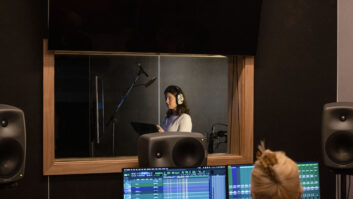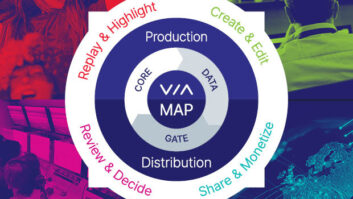I’ve been involved in the broadcast Media Asset Management (MAM) market for over 20 years. During that time, I’ve witnessed dozens of MAM implementations across a wide range of broadcast applications. They have all been different in terms of size, scale and application.
MAM is a broad term that refers to many different sets of functions. The range of these functions for any specific project depends upon a number of factors.
In a typical broadcaster environment, the scope of the project could include any or all of the following applications:
- Supporting TX functions – TX MAM
- Archive and library management – Archive MAM
- Supporting production operations – Production Asset Management (PAM)
- Supporting news operations – News MAM
- Supporting graphics operations – Graphics MAM
Each commercially available MAM system has strengths and weaknesses in one or more of these applications.
Over that 20+ years, I have seen MAM change from monolithic applications (my colleague Steve Sharman has referred to these as ‘Death Star MAM’) running on substantial amounts of on-premise hardware for processing and storage, to lightweight browser-based applications.
The hosting of the MAM platform used to be a straightforward proposition. There were very few web-hosted (now referred to as Cloud) platforms, and those that did exist provided little or no integration with the customers’ broadcast infrastructure. This of course has changed, with a plethora of Cloud-based solutions now available.
Cloud-based computing and storage has lowered the barrier to entry for many small (and some large) companies moving into this sector, by reducing capital costs and providing plug in technology from an ever-increasing list of suppliers. Some of this is in the form of ‘microservices’ employing a pay-as-you-go business model that opens up complex processing to small customers without the need for large scale capital investment. However, the Cloud is not without its problems.
Over the past three months, one of the largest commercial Cloud environments, Microsoft Azure, has experienced several major outages affecting users in Europe, North America and Asia. They put this down to a significant growth in the use of their platform due to the coronavirus pandemic, but it left existing customers unable to access their stored content. Although I understand that data was not lost, the inability to access content for hours or days is potentially catastrophic, regardless of whether you are a major broadcaster creating newscasts or a small, independent post house working on tight production deadlines.
This demonstrates how reliant upon third parties, over which we have no control and little influence, broadcast has become. That’s not to say that I am advocating a move away from Cloud platforms – far from it. What is crucial is to provide resilience and redundancy, and only a very few MAM vendors who really understand the time-critical nature of broadcast really offer this.
As part of our research, and to support our merger and acquisitions activities, we routinely track about 1250 companies operating in the media and broadcast space. These include vendors, service providers and integrators. A quick search through our database shows that almost 300 of these companies self-identify as providing one or more MAM solutions.
Whereas some of these companies are instantly recognisable to the wider broadcast industry, many are not. Most are small companies that only implement their solutions within their home territory. This is not because of any limitations of their systems, but a lack of sales and support resources to take their product further afield.
As a result, these companies are generally destined to remain small unless they can raise funding or sell to larger, more internationally focused businesses, and even if they do become part of a larger group, there is no guarantee that their products will continue in their current form. This leads to the situation where their customers often have to look elsewhere for solutions as their own requirements change and grow.
Inevitably, the industry has become more fragmented, with multiple competing solutions, sometimes within the same broadcast organisation, and interoperability and data migration became key requirements that were not evident when the broadcaster started its MAM journey. This further adds to the complexity of choosing the right solution, particularly for smaller companies who may not have the internal expertise or resources to fully explore the plethora of available platforms.
Remote working has been a hot topic in broadcast for several years, but its importance for survival rather than just cost saving has become evident during the age of coronavirus.
The industry has been forced to change rapidly as a result of coronavirus. Changes that would normally take months or years to agree with different stakeholders have been rushed through to provide a new operating model. MAM has undoubtedly played its part, and as we eventually put this crisis behind us, we will soon see who were the winners, and who were the losers.







